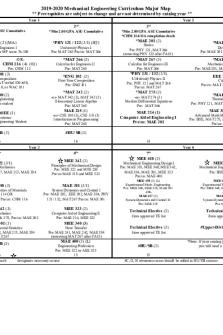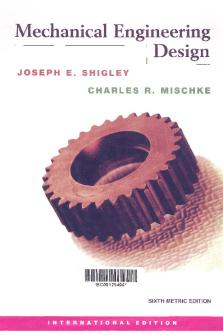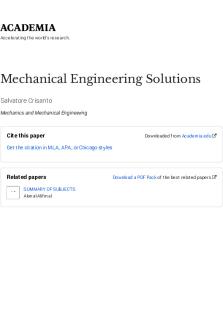Rajesh Rajamani Vehicle Dynamics and Control Mechanical Engineering Series.pdf PDF

| Title | Rajesh Rajamani Vehicle Dynamics and Control Mechanical Engineering Series.pdf |
|---|---|
| Author | Oussama Aatiq |
| Pages | 497 |
| File Size | 20.7 MB |
| File Type | |
| Total Downloads | 25 |
| Total Views | 158 |
Summary
Mechanical Engineering Series Frederick F. Ling Editor-in-Chief Mechanical Engineering Series J. Angeles, Fundamentals of Robotic Mechanical Systems: Theory, Methods, and Algorithms, 2nd ed. P. Basu, C. Kefa, and L. Jestin, Boilers and Burners: Design and Theory J.M. Berthelot, Composite Materials:...
Description
Mechanical Engineering Series Frederick F. Ling Editor-in-Chief
Mechanical Engineering Series J. Angeles, Fundamentals of Robotic Mechanical Systems: Theory, Methods, and Algorithms, 2nd ed. P. Basu, C. Kefa, and L. Jestin, Boilers and Burners: Design and Theory J.M. Berthelot, Composite Materials: Mechanical Behavior and Structural Analysis I.J. Busch-Vishniac, Electromechanical Sensors and Actuators J. Chakrabarty, Applied Plasticity K.K. Choi and N.H. Kim, Structural Sensitivity Analysis and Optimization 1: Linear Systems K.K. Choi and N.H. Kim, Structural Sensitivity Analysis and Optimization 2: Nonlinear Systems and Applications G. Chryssolouris, Laser Machining: Theory and Practice V.N. Constantinescu, Laminar Viscous Flow G.A. Costello, Theory of Wire Rope, 2nd Ed. K. Czolczynski, Rotordynamics of Gas-Lubricated Journal Bearing Systems M.S. Darlow, Balancing of High-Speed Machinery W. R. DeVries, Analysis of Material Removal Processes J.F. Doyle, Nonlinear Analysis of Thin-Walled Structures: Statics, Dynamics, and Stability J.F. Doyle, Wave Propagation in Structures: Spectral Analysis Using Fast Discrete Fourier Transforms, 2nd ed. P.A. Engel, Structural Analysis of Printed Circuit Board Systems A.C. Fischer-Cripps, Introduction to Contact Mechanics A.C. Fischer-Cripps, Nanoindentations, 2nd ed. J. García de Jalón and E. Bayo, Kinematic and Dynamic Simulation of Multibody Systems: The Real-Time Challenge W.K. Gawronski, Advanced Structural Dynamics and Active Control of Structures W.K. Gawronski, Dynamics and Control of Structures: A Modal Approach (continued after index)
Rajesh Rajamani
Vehicle Dynamics and Control
a- Springer
Rajesh Rajamani University of Minnesota, USA
Editor-in-Chief Frederick F. Ling Earnest F. Gloyna Regents Chair Emeritus in Engineering Department of Mechanical Engineering The University of Texas at Austin Austin, TX 78712-1063, USA and Distinguished William Howard Hart Professor Emeritus Department of Mechanical Engineering, Aeronautical Engineering and Mechanics Rensselaer Polytechnic Institute Troy, NY 12180-3590, USA
Vehicle Dynamics and Control by Rajesh Rajamani ISBN 0-387-26396-9 ISBN 9780387263960
e-ISBN 0-387-28823-6
Printed on acid-free paper.
O 2006 Rajesh Rajamani All rights reserved. This work may not be translated or copied in whole or in part without the written permission of the publisher (Springer Science+Business Media, Inc., 233 Spring Street, New York, NY 10013, USA), except for brief excerpts in connection with reviews or scholarly analysis. Use in connection with any form of information storage and retrieval, electronic adaptation, computer software, or by similar or dissimilar methodology now known or hereafter developed is forbidden. The use in this publication of trade names, trademarks, service marks and similar terms, even if they are not identified as such, is not to be taken as an expression of opinion as to whether or not they are subject to proprietary rights.
Printed in the United States of America. SPIN 11012085
For Priya
Mechanical Engineering Series Frederick F. Ling Editor-in-Chief
The Mechanical Engineering Series features graduate texts and research monographs to address the need for information in contemporary mechanical engineering, including areas of concentration of applied mechanics, biomechanics, computational mechanics, dynamical systems and control, energetics, mechanics of materials, processing, production systems, thermal science, and tribology.
Advisory BoardBeries Editors
Applied Mechanics
F.A. Leckie University of California, Santa Barbara D. Gross Technical University of Darmstadt
Biomechanics
V.C. Mow Columbia University
Computational Mechanics
H.T. Yang University of California, Santa Barbara
Dynamic Systems and ControU Mechatronics
D. Bryant University of Texas at Austin
Energetics
J.R. Welty University of Oregon, Eugene
Mechanics of Materials
I. Finnie University of California, Berkeley
Processing
K.K. Wang Cornell University
Production Systems
G.-A. Klutke Texas A&M University
Thermal Science
A.E. Bergles Rensselaer Polytechnic Institute
Tribology
W.O. Winer Georgia Institute of Technology
Series Preface Mechanical engineering, and engineering discipline born of the needs of the industrial revolution, is once again asked to do its substantial share in the call for industrial renewal. The general call is urgent as we face profound issues of productivity and competitiveness that require engineering solutions, among others. The Mechanical Engineering Series is a series featuring graduate texts and research monographs intended to address the need for information in contemporary areas of mechanical engineering. The series is conceived as a comprehensive one that covers a broad range of concentrations important to mechanical engineering graduate education and research. We are fortunate to have a distinguished roster of consulting editors, each an expert in one of the areas of concentration. The names of the consulting editors are listed on page vi of this volume. The areas of concentration are applied mechanics, biomechanics, computational mechanics, dynamic systems and control, energetics, mechanics of materials, processing, thermal science, and tribology.
As a research advisor to graduate students working on automotive projects, I have frequently felt the need for a textbook that summarizes common vehicle control systems and the dynamic models used in the development of these control systems. While a few different textbooks on ground vehicle dynamics are already available in the market, they do not satisfy all the needs of a control systems engineer. A controls engineer needs models that are both simple enough to use for control system design but at the same time rich enough to capture all the essential features of the dynamics. This book attempts to present such models and actual automotive control systems from literature developed using these models. The control system topics covered in the book include cruise control, adaptive cruise control, anti-lock brake systems, automated lane keeping, automated highway systems, yaw stability control, engine control, passive, active and semi-active suspensions, tire models and tire-road friction estimation. A special effort has been made to explain the several different tire models commonly used in literature and to interpret them physically. As the worldwide use of automobiles increases rapidly, it has become ever more important to develop vehicles that optimize the use of highway and fuel resources, provide safe and comfortable transportation and at the same time have minimal impact on the environment. To meet these diverse and often conflicting requirements, automobiles are increasingly relying on electromechanical systems that employ sensors, actuators and feedback control. It is hoped that this textbook will serve as a useful resource to researchers who work on the development of such control systems, both in
x the automotive industry and at universities. The book can also serve as a textbook for a graduate level course on Vehicle Dynamics and Control. An up-to-date errata for typographic and other errors found in the book after it has been published will be maintained at the following web-site:
http://www.menet.umn.edu/-raiamani/vdc.html I will be grateful for reports of such errors from readers. Rajesh Rajamani Minneapolis, Minnesota May 2005
Contents
... v111
Dedication
xix ix
Preface Acknowledgments 1. INTRODUCTION
xxi xxv
1
1.1 Driver Assistance Systems
2
1.2 Active Stability Control Systems
2
1.3 Ride Quality
4
1.4 Technologies for Addressing Traffic Congestion
5
1.4.1 Automated highway systems
6
1.4.2 Traffic friendly adaptive cruise control
6
1.4.3 Narrow tilt-controlled comuuter vehicles
7
1.5 Emissions and Fuel Economy
9
1.5.1 Hybrid electric vehicles
10
1.5.2 Fuel cell vehicles
11
xii
VEHICLE DYNAMICS AND CONTROL
References 2. LATERAL VEHICLE DYNAMICS 2.1 Lateral Systems Under Commercial Development
11 15 15
2.1.1 Lane departure warning
16
2.1.2 Lane keeping systems
17
2.1.3 Yaw stability control systems
18
2.2 Kinematic Model of Lateral Vehicle Motion
20
2.3 Bicycle Model of Lateral Vehicle Dynamics
27
2.4 Motion of Particle Relative to a rotating Frame
33
2.5 Dynamic Model in Terms of Error with Respect to Road
35
2.6 Dynamic Model in Terms of Yaw Rate and Slip Angle
39
2.7 From Body-Fixed to Global Coordinates
41
2.8 Road Model
43
2.9 Chapter Summary
46
Nomenclature
47
References
48
3. STEERING CONTROL FOR AUTOMATED LANE KEEPING
51
3.1 State Feedback
51
3.2 Steady State Error from Dynamic Equations
55
3.3 Understanding Steady State Cornering
59
3.3.1 Steering angle for steady state cornering
59
3.3.2 Can the yaw angle error be zero?
64
Contents
xiii
3.3.3 Is non-zero yaw error a concern? 3.4 Consideration of Varying Longitudinal Velocity 3.5 Output Feedback 3.6 Unity feedback Loop System 3.7 Loop Analysis with a Proportional Controller 3.8 Loop Analysis with a Lead Compensator 3.9 Simulation of Performance with Lead Compensator 3.10 Analysis if Closed-Loop Performance 3.10.1 Performance variation with vehicle speed 3.10.2 Performance variation with sensor location
86
3.1 1 Compensator Design with Look-Ahead Sensor Measurement 88 3.12 Chapter Summary
90
Nomenclature
90
References
92
4. LONGITUDINAL VEHICLE DYNAMICS
95
4.1 Longitudinal Vehicle Dynamics
95
4.1.1 Aerodynamic drag force
97
4.1.2 Longitudinal tire force
99
4.1.3 Why does longitudinal tire force depend on slip?
101
4.1.4 Rolling resistance
104
4.1.5 Calculation of normal tire forces
106
4.1.6 Calculation of effective tire radius
108
xiv
VEHICLE DYNAMICS AND CONTROL
4.2 Driveline Dynamics
111
4.2.1 Torque converter
112
4.2.2 Transmission dynamics
114
4.2.3 Engine dynamics
116
4.2.4 Wheel dynamics
118
4.3 Chapter Summary
120
Nomenclature
120
References
122
5. INTRODUCTION TO LONGITUDINAL CONTROL 5.1 Introduction
123 123
5.1.1 Adaptive cruise control
124
5.1.2 Collision avoidance
125
5.1.3 Automated highway systems
125
5.2 Benefits of Longitudinal Automation
126
5.3 Cruise Control
128
5.4 Upper Level Controller for Cruise Control
130
5.5 Lower Level for Cruise Control
133
5.5.1 Engine torque calculation for desired acceleration
134
5.5.2 Engine control
137
5.6 Anti-Lock Brake Systems
137
5.6.1 Motivation
137
5.6.2 ABS functions
141
Contents
xv
5.6.3 Deceleration threshold based algorithms
142
5.6.4 Other logic based ABS control systems
146
5.6.5 Recent research publications on ABS
148
5.7 Chapter Summary
148
Nomenclature
149
References
150
6. ADAPTIVE CRUISE CONTROL
153
6.1 Introduction
153
6.2 Vehicle Following Specifications
155
6.3 Control Architecture
156
6.4 String Stability
158
6.5 Autonomous Control with Constant Spacing
159
6.6 Autonomous Control with the Constant Time-Gap Policy
162
6.6.1 String stability of the CTG spacing policy
164
6.6.2 Typical delay values
167
6.7 Transitional Trajectories 6.7.1 The need for a transitional controller
169 169
6.7.2 Transitional controller design through R - R diagrams 172 6.8 Lower Level Controller
178
6.9 Chapter Summary
180
Nomenclature
180
References
181
xvi
VEHICLE DYNAMICS AND CONTROL
Appendix 6.A 7. LONGITUDINAL CONTROL FOR VEHICLE PLATOONS
183 187
7.1 Automated Highway Systems
187
7.2 Vehicle Control on Automated Highway Systems
188
7.3 Longitudinal Control Architecture
189
7.4 Vehicle Following Specifications
191
7.5 Background on Norms of Signals and Systems
193
7.5.1 Norms of signals
193
7.5.2 System norms
194
7.5.3 Use of system norms to study signal amplification
195
7.6 Design Approach for Ensuring String Stability
198
7.7 Constant Spacing with Autonomous Control
200
7.8 Constant Spacing with Wireless Communication
203
7.9 Experimental Results
206
7.10 Lower Level Controller
208
7.1 1 Adaptive Controller for Unknown Vehicle Parameters
209
7.1 1.1 Redefined notation
209
7.1 1.2 Adaptive controller
21 1
7.12 Chapter Summary
214
Nomenclature
215
References
216
Appendix 7.A
218
xi
Contents
8. ELECTRONIC STABILITY CONTROL 8.1 Introduction
xvii 22 1 22 1
8.1.1 The functioning of a stability control system
22 1
8.1.2 Systems developed by automotive manufacturers
223
8.1.3 Types of stability control systems
223
8.2 Differential Braking Systems
224
8.2.1 Vehicle model
224
8.2.2 Control architecture
229
8.2.3 Desired yaw rate
230
8.2.4 Desired side-slip angle
23 1
8.2.5 Upper bounded values of target yaw rate and slip angle 233 8.2.6 Upper controller design
235
8.2.7 Lower Controller design
238
8.3 Steer-By-Wire Systems
240
8.3.1 Introduction
240
8.3.2 Choice of output for decoupling
24 1
8.3.3 Controller design
244
8.4 Independent All Wheel Drive Torque Distribution
247
8.4.1 Traditional four wheel drive systems
247
8.4.2 Torque transfer between left and right wheels
248
8.4.3 Active control of torque transfer to all wheels
249
8.5 Chapter Summary
25 1
xviii
VEHICLE DYNAMICS AND CONTROL
Nomeclature
252
References
255
9. MEAN VALUE MODELING OF SI AND DIESEL ENGINES 9.1 SI Engine Model Using Parametric Equations
257 25 8
9.1.1 Engine rotational dynamics
259
9.1.2 Indicated combustion torque
260
9.1.3 Friction and pumping losses
26 1
9.1.4 Manifold pressure equation
262
9.1.5 Outflow rate from intake manifold
263
9.1.6 Inflow rate into intake manifold
263
9.2 SI Engine Model Using Look-Up Maps
265
9.2.1 Introduction to engine maps
266
9.2.2 Second order engine model using engine maps
270
9.2.3 First order engine model using engine maps
27 1
9.3 Introduction to Turbocharged Diesel Engine Maps
27 3
9.4 Mean Value Modeling of Turbocharged Diesel Engines
274
9.4.1 Intake manifold dynamics
275
9.4.2 Exhaust manifold dynamics
275
9.4.3 Turbocharger dynamics
276
9.4.4 Engine crankshaft dynamics
277
9.4.5 Control system objectives
27 8
9.5 Lower Level Controller with SI Engines
279
Contents 9.6 Chapter Summary Nomenclature References 10. DESIGN AND ANALYSIS OF PASSIVE AUTOMOTIVE SUSPENSIONS 10.1 Introduction to Automotive Suspensions 10.1.1 Full, half and quarter car suspension models 10.1.2 Suspension functions 10.1.3 Dependent and independent suspensions 10.2 Modal Decoupling 10.3 Performance Variables for a Quarter Car Suspension 10.4 Natural Frequencies and Mode Shapes for the Quarter Car 10.5 Approximate Transfer Functions Using Decoupling 10.6 Analysis of Vibrations in the Sprung Mass Mode 10.7 Analysis of Vibrations in the Unsprung Mass Mode 10.8 Verification Using the Complete Quarter Model 10.8.1 Verification of the influence of suspension stiffness 10.8.2 Verification of the influence of suspension damping 10.8.3 Verification of the influence of tire stiffness 10.9 Half-Car and Full-Car Suspension Models 10.10 Chapter Summary Nomenclature References
xix
xx
VEHICLE DYNAMICS AND CONTROL
11. ACTIVE AUTOMOTIVE SUSPENSIONS
325
11.1 Introduction
325
11.2 Active Control: Trade-offs and Limitations
328
11.2.1 Transfer functions of interest
328
11.2.2 Use of the LQR Formulation and its relation to H 2 Optimal Control
328
11.2.3 LQR formulation for active suspension design
330
11.2.4 Performance studies of the LQR controller
332
11.3 Active System Asymptotes
339
11.4 Invariant Points and Their Influence on the Suspension Problem 1 1.5 Analysis of Trade-offs Using Invariant Points
34 1 343
11.5.1 Ride quality1 road holding trade-offs
344
11S . 2 Ride quality1 rattle space trade-offs
345
11.6 Conclusions on Achievable Active System Performance
346
11.7 Performanceof a Simple Velocity Feedback Controller
348
11.8 Hydraulic Actuators for Active Suspensions
350
Similar Free PDFs

Mechanical-engineering
- 1 Pages

Mechanical engineering
- 1 Pages

Mechanical Engineering Formulas AND REVI
- 162 Pages

2019-2020 Mechanical Engineering
- 2 Pages

Mechanical Engineering Circuits
- 10 Pages

MECHANICAL ENGINEERING REVIEW MANUAL
- 509 Pages

Mechanical engineering lab report
- 18 Pages

Mechanical Engineering Lecture Notes
- 13 Pages

MECHANICAL ENGINEERING REVIEW MANUAL
- 509 Pages

Mechanical Engineering Elements
- 29 Pages

Mechanical engineering design
- 6 Pages

Mechanical Engineering Solutions
- 21 Pages
Popular Institutions
- Tinajero National High School - Annex
- Politeknik Caltex Riau
- Yokohama City University
- SGT University
- University of Al-Qadisiyah
- Divine Word College of Vigan
- Techniek College Rotterdam
- Universidade de Santiago
- Universiti Teknologi MARA Cawangan Johor Kampus Pasir Gudang
- Poltekkes Kemenkes Yogyakarta
- Baguio City National High School
- Colegio san marcos
- preparatoria uno
- Centro de Bachillerato Tecnológico Industrial y de Servicios No. 107
- Dalian Maritime University
- Quang Trung Secondary School
- Colegio Tecnológico en Informática
- Corporación Regional de Educación Superior
- Grupo CEDVA
- Dar Al Uloom University
- Centro de Estudios Preuniversitarios de la Universidad Nacional de Ingeniería
- 上智大学
- Aakash International School, Nuna Majara
- San Felipe Neri Catholic School
- Kang Chiao International School - New Taipei City
- Misamis Occidental National High School
- Institución Educativa Escuela Normal Juan Ladrilleros
- Kolehiyo ng Pantukan
- Batanes State College
- Instituto Continental
- Sekolah Menengah Kejuruan Kesehatan Kaltara (Tarakan)
- Colegio de La Inmaculada Concepcion - Cebu



